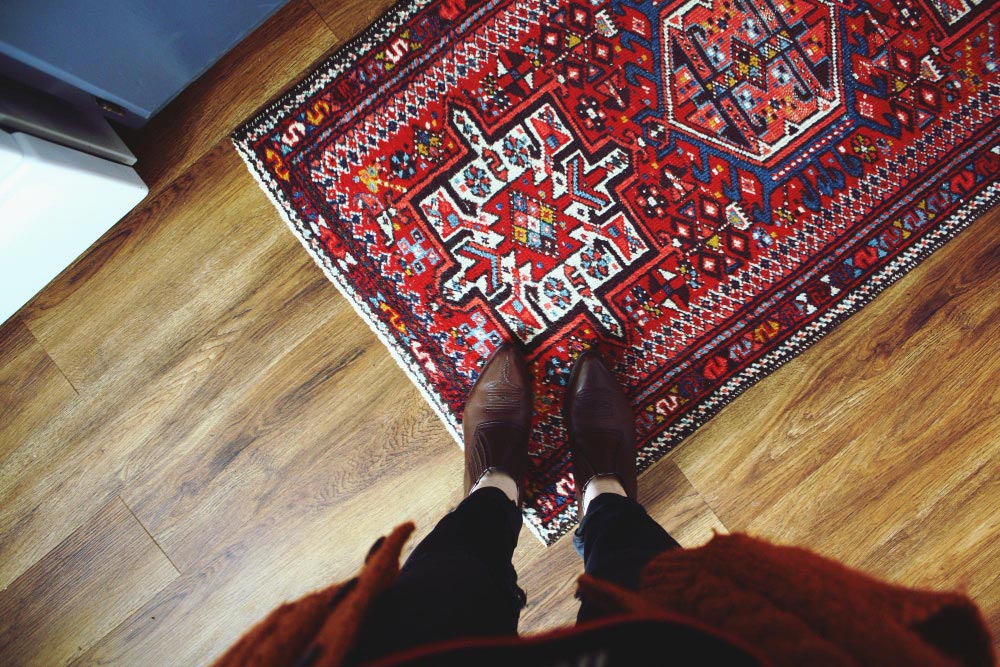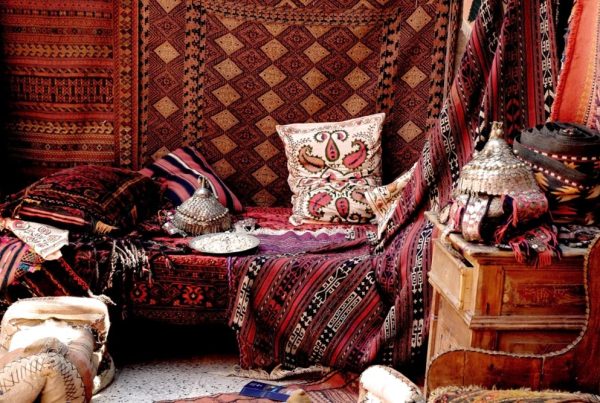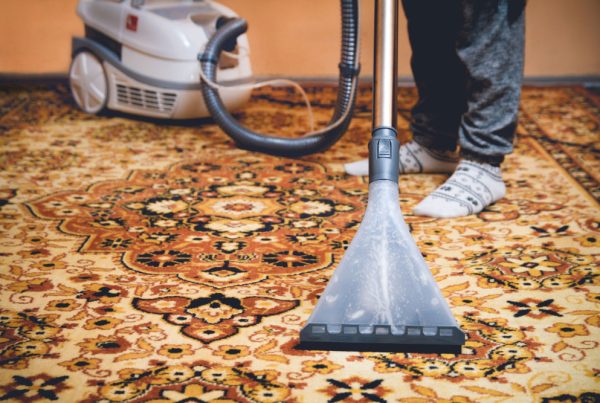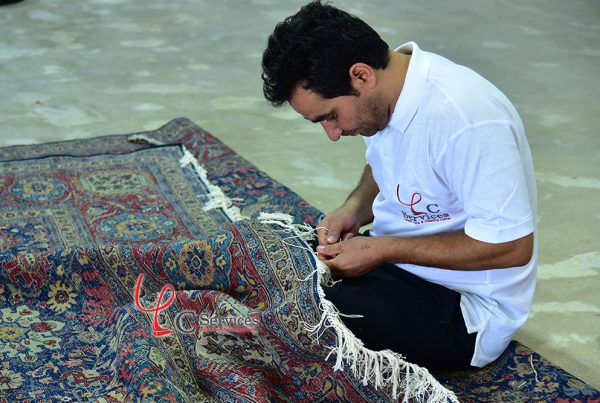When a carpet’s edge begins to fray, every step pulls more fibers loose and every vacuum pass widens the damage. Effective edge binding halts this unraveling, stabilizes the foundation, and restores a clean outline that protects both appearance and lifespan. Whether you own a contemporary area rug or a hand-knotted heirloom, choosing the right binding technique matters. This guide explains expert options used by professional workshops and why the correct method depends on fiber, construction, and condition. Homeowners in Beirut and across Lebanon can use these insights to understand what to request and how to maintain results after the work is complete.
Why Edges Fail
Edges take the brunt of abrasion. Chairs scrape them, vacuums tug at loose yarns, and door thresholds concentrate wear. On woven carpets, edges protect the warp and weft of the foundation; once this guard fails, pile yarns begin to slip and the weave can open up. For machine-made rugs with a surged or taped edge, adhesive fatigue, UV exposure, and flexing at corners often cause peeling or fray. In historic or tribal pieces, the original overcasting or guard border may have worn thin over decades.
Inspection First: The Expert Workflow
Before binding, a professional completes a structured assessment:
- Fiber and construction check: Wool, silk, cotton, or blends; hand-knotted, hand-tufted, flatweave, or machine-made.
- Edge condition mapping: Missing yarns, open wefts, broken warps, or delamination on synthetic backings.
- Tension and flatness check: Buckling or curling requires correction to prevent future strain on the new edge.
- Colorfast test: If cleaning precedes binding, dyes are tested to avoid migration during wash and finishing.
This baseline ensures the chosen technique stabilizes structure rather than simply covering a problem. For valuable pieces in Beirut and other humid coastal zones of Lebanon, moisture control and correct drying before binding are especially important.
Technique 1: Hand Overcasting (Traditional Overcast Stitch)
Hand overcasting is the classic choice for hand-knotted and flatwoven pieces. A continuous stitch is wrapped over the edge, cinching and protecting the last row of warps and wefts. It is slow but highly controllable and ideal for Persian and antique rugs.
- Pros: Excellent structural protection, discreet look, matches heritage craftsmanship.
- Cons: Time-intensive; requires yarn matching for color and diameter.
- Best for: Hand-knotted, kilims, tribal pieces, and museum-grade textiles.
Technique 2: Serging (Machine Whip Stitch)
Serging uses a specialized machine to wrap thread around the carpet edge with high consistency. The appearance is a tight, even “corded” finish that reads modern and clean.
- Pros: Uniform finish, efficient for long edges, multiple thread options.
- Cons: Less authentic for antiques; machine tension must be tuned for thick or uneven foundations.
- Best for: Machine-made carpets, modern hand-loomed pieces, runners requiring a sleek finish.
Technique 3: Binding Tape (Sewn Fabric Edge)
Binding tape is a fabric strip sewn along the perimeter, covering raw edges and providing a crisp border. Materials include cotton, wool, leather, and durable poly blends.
- Pros: Highly customizable; protects corners; can visually enlarge or frame the rug.
- Cons: Not appropriate for many antiques; adhesives alone should be avoided in favor of stitching.
- Best for: Broadloom cut to size, stair runners, contemporary rugs needing a tailored look.
Technique 4: Guard Border Recreation
On heritage rugs, the original guard border may have eroded. Recreating it involves securing the foundation and hand-building a new protective band that echoes the original weave.
- Pros: Preserves authenticity and stabilizes structure for the long term.
- Cons: Skilled, time-heavy craftsmanship; requires dye and yarn matching.
- Best for: Persian, Caucasian, and tribal pieces where historic character matters.
Technique 5: Selvage Rebuild for Flatweaves
Kilims and other flatweaves depend on strong selvages. A rebuild secures loose wefts and applies a compact overcast that resists lateral abrasion.
- Pros: Excellent durability for flat textiles; keeps edges straight.
- Cons: Requires precise tension to avoid waviness.
- Best for: Kilims, tapestries, and lightweight weaves.
Technique 6: Leather or Suede Facing
For designer projects and high-traffic entries, a leather or suede facing offers a robust, premium perimeter. It is stitched, not just glued, to ensure bond and flexibility.
- Pros: High wear resistance; visually distinctive.
- Cons: Adds thickness; not suitable for delicate antiques.
- Best for: Contemporary rugs, hall runners, and hospitality settings.
Stabilization Steps That Make or Break the Result
Binding is only as strong as the base it grips. Professionals add quiet, essential steps that extend service life:
- Foundation securing: Locking loose wefts and replacing missing warps before any edge treatment.
- Edge truing: Squaring and lightly beveling frayed ends to create a consistent bite for stitches.
- Tension balancing: Correcting buckles so the new edge does not fight against curvature.
- Fiber matching: Selecting yarn diameter and twist to behave like the original materials.
Common Mistakes to Avoid
Avoid shortcuts that fail under stress or devalue a fine rug:
- Glue-only “fixes”: Adhesives age poorly, crack, and can wick into fibers, making future repairs difficult.
- Oversized thread or tape: Bulky edges catch shoes and vacuums, inviting new damage.
- Incorrect machine tension: Can distort the edge or pucker patterns.
- Ignoring cleaning: Binding over soil shortens the life of the repair and traps grit at the edge.
Care Tips After Binding
Once your carpet is stabilized, follow a few habits to keep edges secure. These are especially helpful in busy households in Beirut and throughout Lebanon:
- Use a breathable pad: Reduces lateral movement and abrasion at edges.
- Vacuum smart: Suction-only on delicate pieces; avoid aggressive beater bars at the perimeter.
- Rotate seasonally: Even out wear and UV exposure along traffic paths and windows.
- Mind thresholds: Add door sweeps and ensure no metal strips rub against the edge.
Choosing the Right Technique for Your Carpet
Match the method to your rug’s construction and your goals. If authenticity matters on a hand-knotted piece, hand overcasting or guard border recreation keeps the language of the weave intact. For modern broadloom cut to size, a stitched binding tape or serged edge offers sleek protection. When in doubt, request a small test length to review appearance and scale, especially if the rug has a bold border that could be visually narrowed by heavy stitching.
Professional vs. DIY
Light fray can sometimes be paused with careful hand stitching, but most unraveling benefits from professional stabilization. Workshops maintain yarn libraries, control stitch tension, and understand how different foundations respond to sewing machines and hand tools. For valuable pieces in Beirut and coastal areas of Lebanon, expertise is essential to avoid distortions and mismatched materials that stand out against historic craftsmanship.
Key Takeaways
- Inspect first: Stabilize foundation issues before any edge work.
- Choose fit-for-purpose methods: Hand overcast for heritage; serging or binding tape for modern pieces.
- Prioritize stitching over adhesives: Durable, maintainable, and kinder to fibers long term.
- Maintain wisely: Pads, smart vacuuming, and rotation extend the life of the repair.
Disclaimer
This article provides general guidance on carpet edge binding techniques. Individual rugs vary by fiber, weave, dye stability, and condition. Always assess colorfastness, structure, and tension before attempting repairs. For valuable, antique, or delicate pieces, consult an experienced professional.



